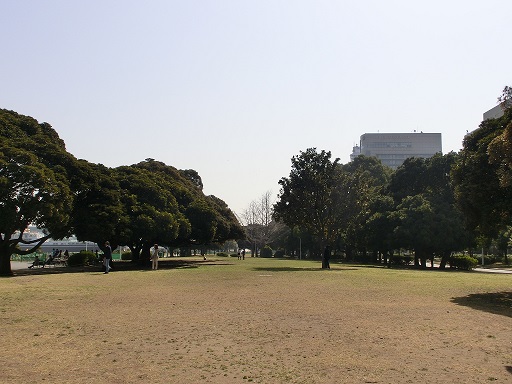|
"Yokohama Harbor Area"

If you walk on the Yamashita promenade from Yokohama Red Brick Warehouses to the southeast, you will reach Yokohama Harbor. A promenade is a long, open, level area usually next to a river or large body of water where people may walk. The harbor used to be a port near the end of the Edo Age (1603 - 1868) until Word War II. When I visited there, the harbor was very calming and the Landmark Tower and Yokohama Grand Intercontinental Hotel in Minato Mirai Area were seen from the harbor.Please refer the page of "Minato Mirai Area" for more detail: http://handejapan19.html.xdomain.jp/TravelDestinations/Kanto/MinatoMirai_E.html 
You would see a small bank in the harbor. This is the "Zounohana" bank, meaning an elephant nose in Japanese. The bank is now covered by concrete walls, but it used to be a sandbank. As "Yokohama" means a beach in crosswise direction, in Japanese and the "Zonohana" bank is located to the parallel to the quay in the Yokohama harbor, people called the "Zounohana" bank also "Yokohama". This became the name of the city. 
From the "Zonohana" bank, you will see buildings surrounding Yokohama Harbor. Yokohama has only 160 years of history, but some of these buildings are historical. Three old buildings with a tower are named Yokohama "Santo", which means Yokohama Three Towers in Japanese. They have nick names of "King", "Queen" and "Jack". These buildings were built before World War II. "King" is the Kanagawa Prefectural Government Office. This building was rebuilt in 1928, after the previous building was destroyed by the Great Kanto Earthquake which happened in 1923. 
"Queen" is the building of Yokohama Customs, built in 1934. "Jack" is the Port Opening Memorial Hall, built in 1927. |












